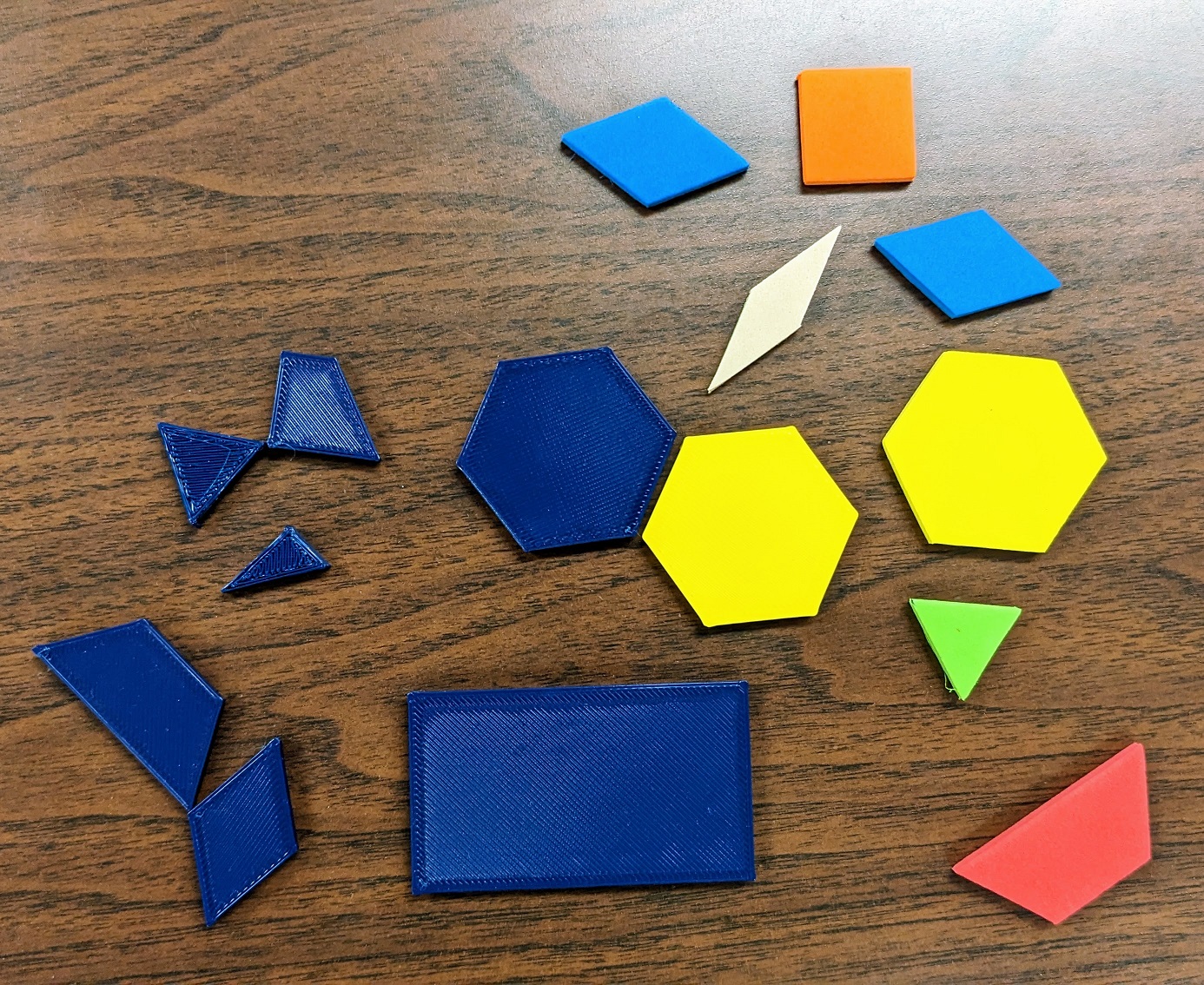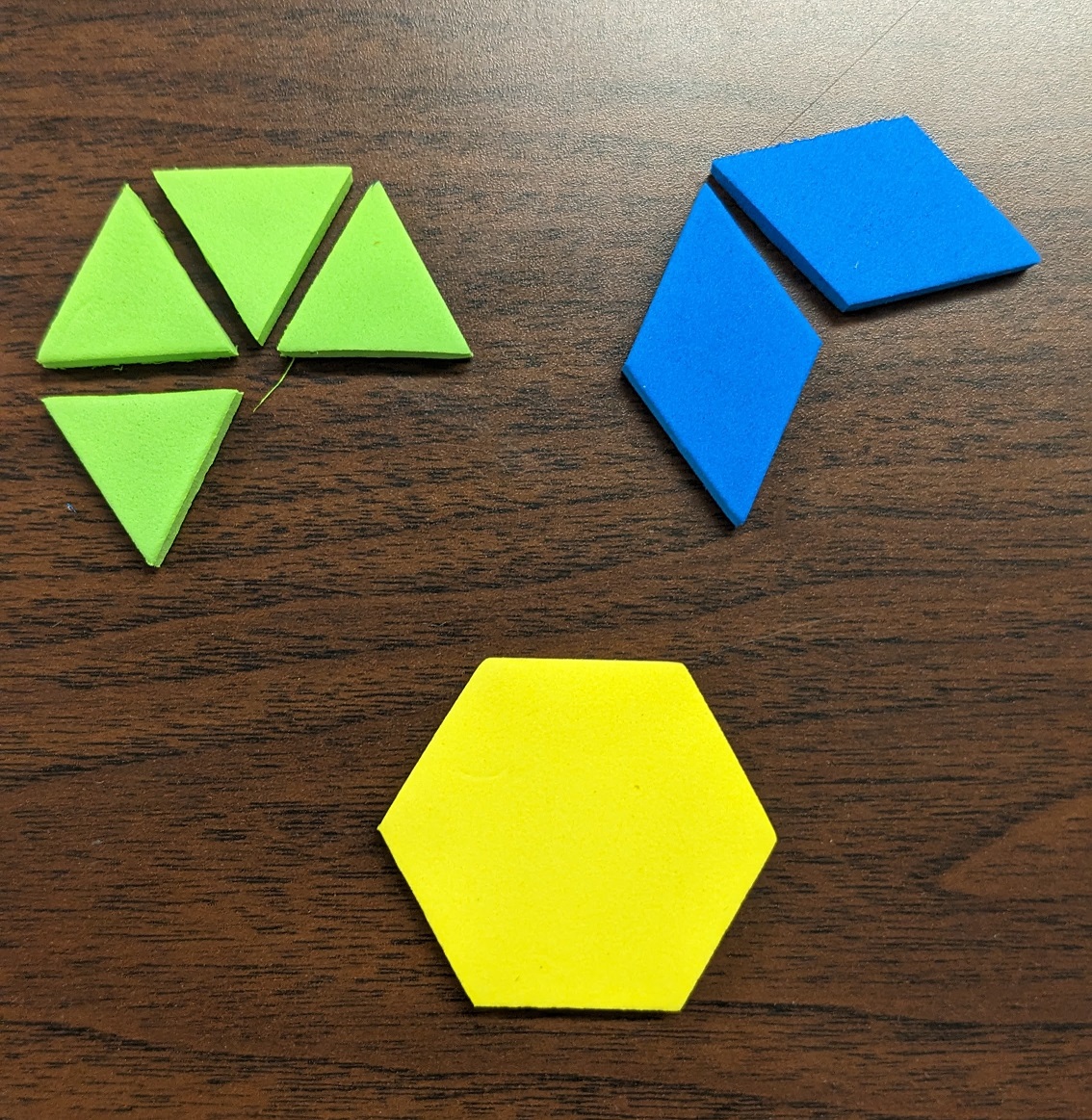Overview
Pattern Blocks are an extremely versatile manipulative. They are most often used either in preschool – 1st grade for filling shapes or in upper elementary for work with fractions.

MakerSpace Files
There are two sets of files.
- STL files in Thingiverse for 3D printing plastic fraction circles.
- SVG files in Design Space for cutting foam (or paper) versions of the fraction circles.
Cricut version of the files can be downloaded here for the link to Design Space. This includes shapes for a standard set of pattern blocks.
3D printer version of the files can be downloaded here.
Note that a standard pattern block set includes 250 blocks (25 hexagons & 25 squares, and 50 each of triangles, trapezoid, blue rhombi, & tan rhombi). A fraction supplement set includes 30 right trapezoids (1/4 of a hexagon) and 60 right triangles (1/12 of a hexagon). You may choose to print some shapes and not others to supplement any existing sets of pattern blocks.
| Color | grams of PLA per print | Cost ($18 / Kg) per print | Time | |
| Hexagons (n = 9) | Yellow | 51.91 | $0.93 | 1 hr 44 min |
| Triangles (n = 60) | Green | 65.00 | $1.17 | 2 hr 33 min |
| Wide Rhombus (n = 27) | Blue | 55.58 | $1.00 | 2 hr 2 min |
| Thin Rhombus (n = 50) | Beige/Tan | 63.81 | $1.15 | 2 hr 25 min |
| Isosceles Trapezoid (n = 18) | Red | 54.20 | $0.98 | 1 hr 55 min |
| Square (n = 25) | Orange | 58.41 | $1.05 | 2 hr 5 min |
| Right Trapezoid* (n = 30) | Brown | 46.48 | $0.84 | 1 hr 45 min |
| Right Triangle* (n = 60) | Purple | 36.43 | $0.66 | 1 hr 37 min |
| Odd Ones “wholes” (n = 3) | White | 34.28 | $0.62 | 1 hr 8 min |
Note: If you have not read the tutorial post on MakerSpace Manipulatives, please do so.
Examples of Use
Finding Equivalent Fractions
Students can use pattern blocks to create and find equivalent fractions given a whole. In the below example, the yellow hexagon is the whole and the blue rhombi represent 2/3. The four green triangles, therefore, represent the equivalent fraction of 4/6. Students can overlay these shapes onto the whole or the corresponding fraction.
Many extensions use two hexagons as the whole (or some other combination). Teachers can create their own “wholes” as singular shapes or combinations of other shapes to have students engage in various fraction topics.

